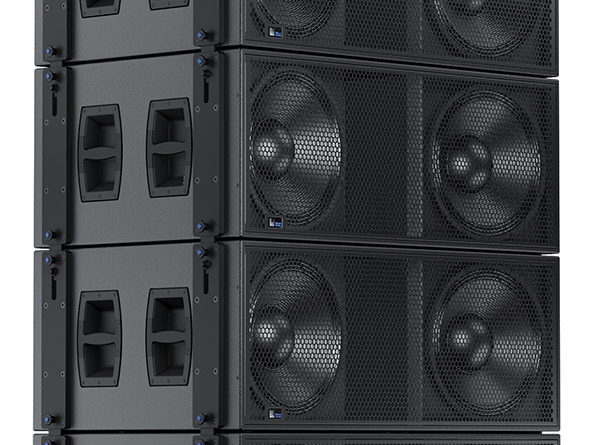Part 3: The Biggest HiFi In The World; MEYER SOUND – METALLICA RIG O2, LONDON 2017
PART THREE – THE MEYER LEO FAMILY – LOUDSPEAKERS FIT TO FILL BIG ROOMS
Now here’s the funny thing, for a system of such momentous magnitude, there really are terribly few components. Even more efficiently than Lego, Meyer Sound enable you to build your sonic palace with only three kinds of building blocks, one of which, in this system, is that VLFC fear register enclosure. Most Meyer applications will only call for bass units plus mid-tops boxes. There are several models of two-way enclosures and the original plot for this show, included a slightly smaller model of box in certain spots, called JM-1P. But Big Mick requested that they use different boxes instead, from the same ‘family’. The big ones.
Very Mick.
First, a moment of philosophy, just in case you ain’t seen the video. Meyer Sound are all about the same thing that real hifi companies are always on about. Every single loudspeaker manufacturer of any note in high end stereo and surround loudspeakers has had different language for it. They talk about the artist, the music and the emotion. Also words like transparency and references to lack of adding any colourations or distortions.
The list of top end loudspeaker brands I have reviewed in HiFi – and in massive arrays thereof – reads like a who’s-who in audio. I have been regaled with experiencing the best of the finest. I mean, really… I have even been sent to recording studios to audition big speakers and the top price ticket was a million quid for an install. On the car side, well, you can call me Jezza but without the misogyny or veiled racism. Been, done, tee-shirt now dusters.
But Meyer is different, by position. Whereas all speaker makers, car and home are all about playing the music correctly, the stuff at the live gig is all about being a Blank White Canvas for the artist to paint upon. Yes, this happens to be a metal mayhem concert, by legends of the genre, with a twice globally-awarded Sound Engineer Of The Year at the helm. He who had 1.2 MegaWatts under his hand at the Russian Monsters of Rock event, (each punter got one watt each) but it might just as well have been an opera with full orchestra or a preacher who REALLY wants to be heard. Meyer state that their job is to provide linearity and potency sufficient to fulfil all needs.
In the system design material I was able to see for the show, there are references to Mick’ particular audio design brief. To whit: “Near field experience, with Metallica standard extreme power capability”
So what are these units? They are collectively known as the LEO family.
Let’s look at each in turn…
LEO : LINEAR LINE ARRAY LOUDSPEAKER
Meet the flagship of the Line Array speakers. Line Array, refers to the stacking system, in dangling ‘lines’ of suspended boxes. The rigging system alone is a crucial slice of the engineering, and you can hang them with parallel faces for furthest throw of sound, as this is the box to reach the back rows with clarity, literally, ‘long throw’.
Here is a line array of LEOs…
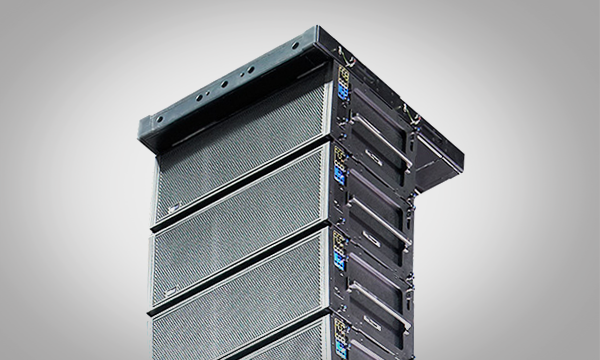
Inside each one are two fifteen inch speaker drivers and a specially designed horn with what’s called an REM manifold. How horns work is simple. They are megaphones. But the shape matters like hell and good horns are designed only by acousticians skilled in the dark art, often with woodwork and prototype iterations aplenty. LEO has the MkII REM manifold. Looking at the picture on the public website, you can see the horn mouth, looking effectively like four slot horns, stacked. The shape and taper of the throat and mouth will control the dispersion in a way that can be shown on a colour plot of predicted performance. However, this is a horn, taking over from fifteens. And they reach up, all the way to proper tinkly-breathy high frequencies. Although again, you won’t get frequency graphs from anechoic chambers to look at from Meyer. These would be three-way boxes from most designers’ point of view because ‘horns cannot do mids’ or there would be bullet tweeters. But no, for one thing, the fifteens are held in such a vice-like grip by their on-board amplification and their boxes are so bloody good that they can play up to where ever these mad horns pick up low-mid duties from, (and again, we ain’t gonna get told. but it has to be bonkers low down for a horn) so the fifteens might be reaching up to 12kHz or 4kHz, no way to really guess without assaulting the parts with measurement kit.
For a second thing, the acoustic wonder of this system, is the proprietary design compression drivers in the guts of this horn. In here we have two four inch compression drivers, running everything above where the fifteens give up, with no extra crossover point in the midst of our hearing’s most discerning passband. They have to be working together to drive the single throat behind this stack of four slots.
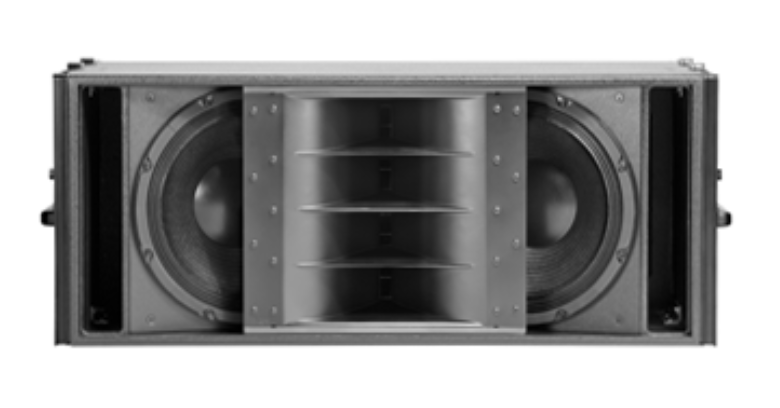
Thing is, the horns reach so bloody far up at the top end. In order to move at 20kHz, with twenty thousand gravities of momentary acceleration on the diaphragms, for arguments’ sake – whatever it is – this is one incredible transducer with a genius-grade-horn loading to do what it does. That very top-tippy octave is normally simply absent, live. And it is all in there on this unit.
Those four inch compression drivers are, in my opinion, one of the most ahead-of-the-competition components of the entire Meyer technology. All of it is impressive but I select that one bit for being a superstar in the constellation of Meyer-ness. I would love to see them but I think I’d have to sign an official secrets item – or NDA.
The fifteens are very like a car install. For one, they are angled back, such that they are at 90º to each other, possibly creating a mutual pressure wave combining forwards, or it looks that way. For another they are made to work in what is a small enclosure for the transducer diameter. Alternatively, the front drop only shows half of each transducer to see. The horn housing itself could be acting as a pressure-slot-load to the big drivers. The fifteen incher’s enclosures are also slot ported, with gas flowed curvy edged ports. Because these boxes are designed at the same time as the transducers within, just like the hifi makers get to do, (but rare on the car side) I also reckon that they are as at home as a piston in a cylinder in their solidly acoustically-suspended world. The driver will be made to marry up to that cubic like it was born for it. And the back wave from the big cones through those slotted-ports – betcha it’s in phase with the main front output.
All that tech, guessed at or plain incorrect – and I make no claims, these are my guesses – does add up to a spankingly loud enclosure.
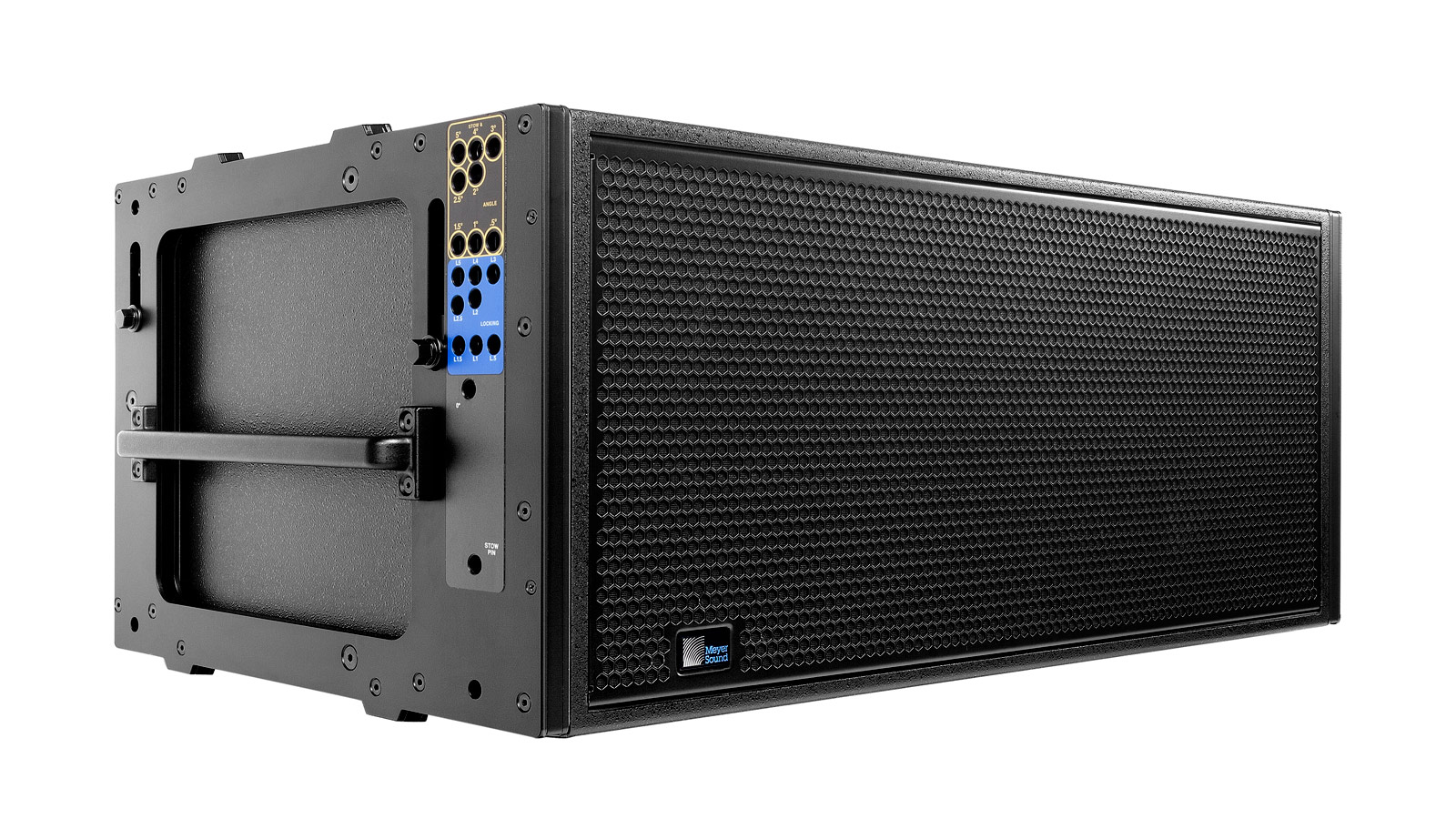
LYON: LINEAR LINE ARRAY LOUDSPEAKER
In a scaleable fashion, the LYON enclosure is also a Line Array design, meant for flying in all sorts of curved or straight dangles but it is a little bit less massive than the LEO.
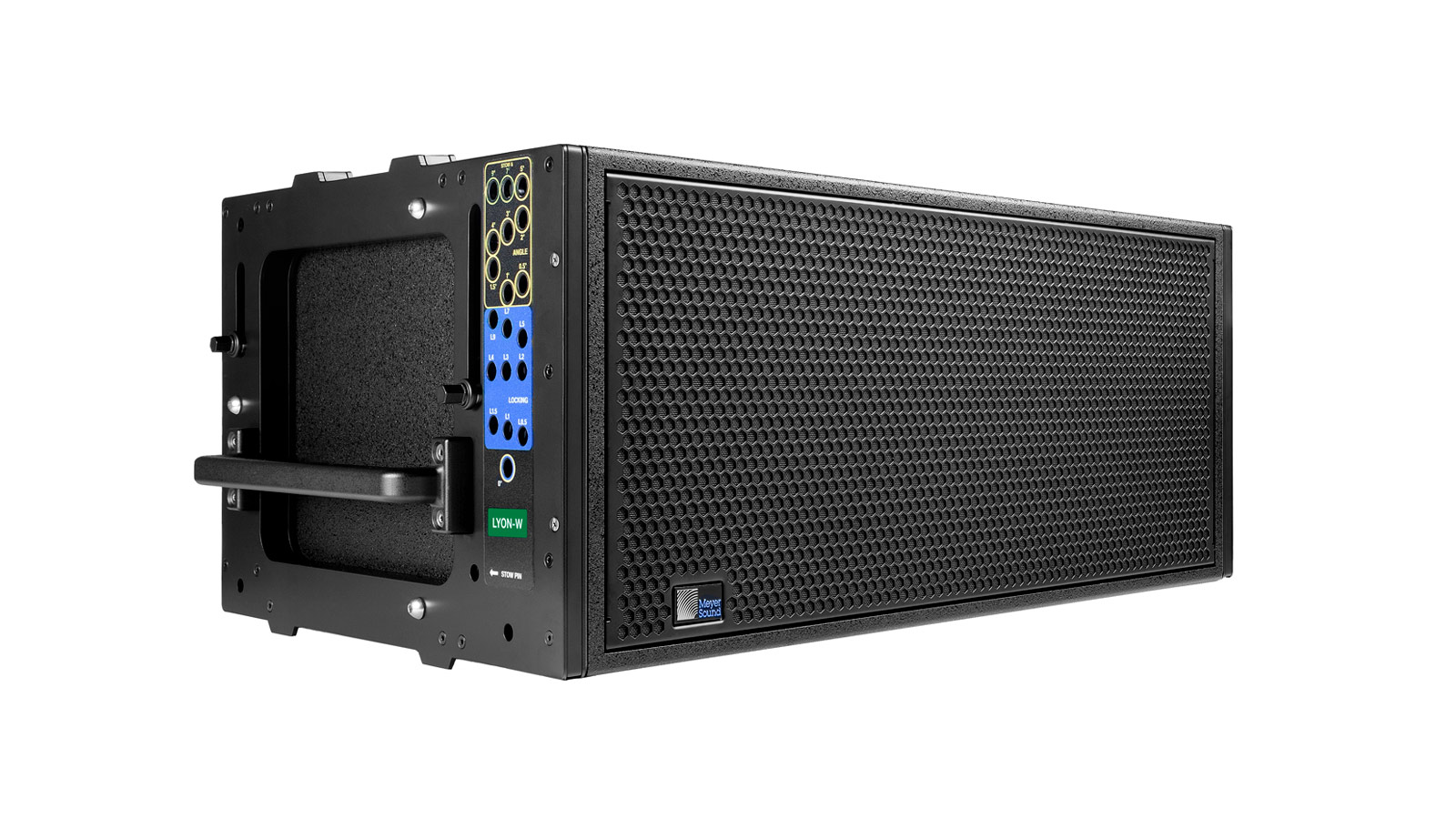
Instead of twin fifteens in the box, we have two twelve inch drivers and the horn in between them still has two compression drivers in their guts but they are three inch, not four inch. The output is as constant directivity-specified as the LEO and it is a perfect sonic match for the rest of the family. It looks very similar to the LEO, just smaller.
LEOPARD : COMPACT LINEAR LINE ARRAY LOUDSPEAKER
The LEOPARD is described as a Compact Line Array loudspeaker. Again, a scaling down of the concept with the same sonic footprint, just smaller again, the LEOPARD is still one potent loudspeaker that can peel your damn eyeballs, it just has two nine inch main drivers and just one of the compression drivers instead of two driving the highs and it is a three inch, not four incher in the box, I was allowed to learn.
The enclosure is a trapezium, for easier bending of arrayed speakers.
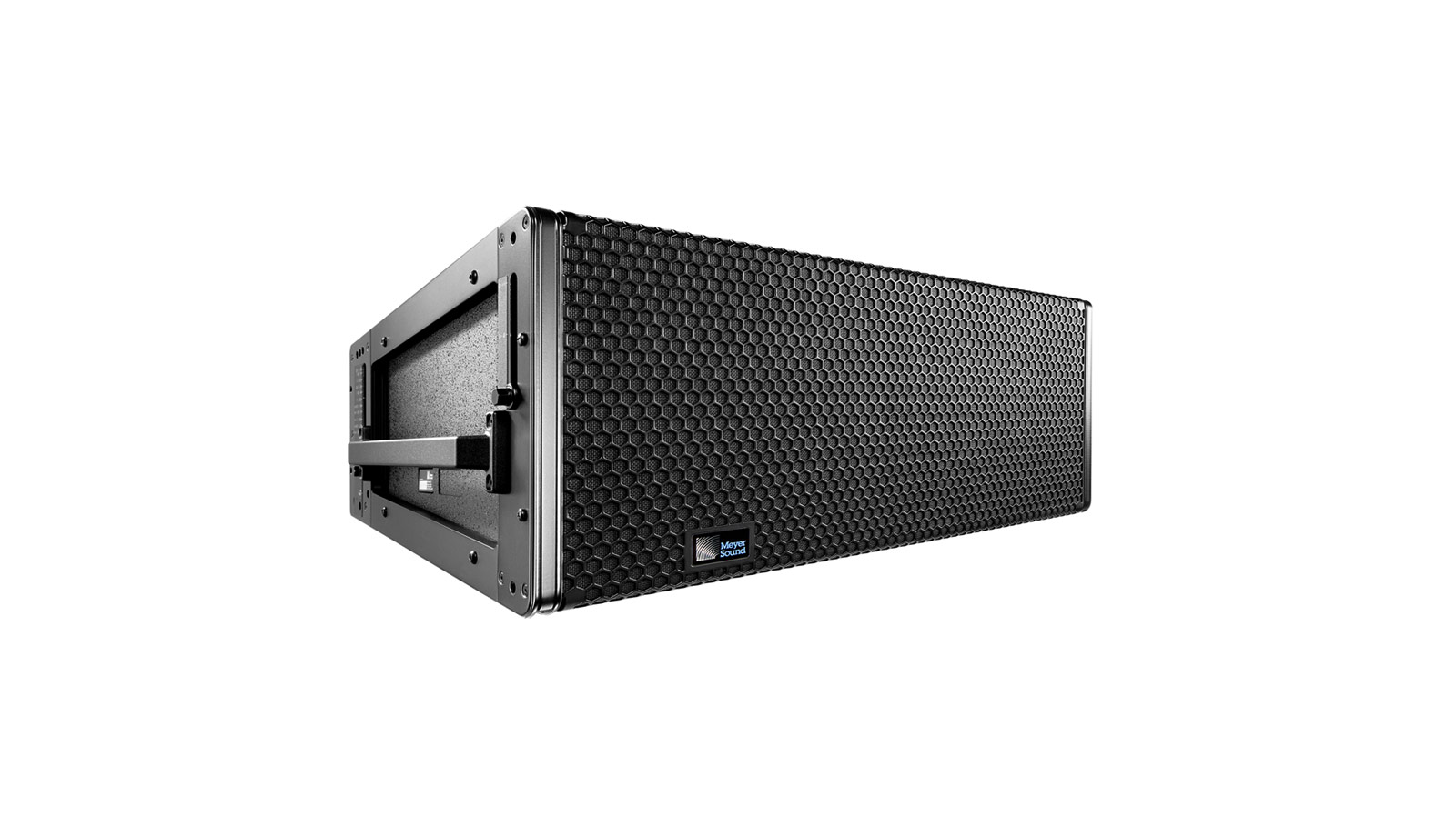
1100-LFC : LOW FREQUENCY CONTROL ELEMENT
These are ‘simply’ two mighty ribbed coned eighteen inch loudspeakers in a box. However, the enclosure is a cunning thing for it is optimised to play loud, hard and deep yet with huge control of the cones. The amplification is truly hench and the marriage between watts and DSP is harmonious. And now, your reward for reading this far. Here is a thing, the subwoofer effect, wherein us car audio guys and home theatre experts alike, know that adding a good subwoofer doesn’t just to make it more ‘boomy’ but enlivens the entire frequency band somehow, never ever stops. It is linear and carries on forever!
Two years ago at Glastonbury, there was a moment’s political debate. The system used by every other band, with 21 massive subwoofers underneath the stage was deemed inadequate. Mick insisted on tripling the number to 63 for his lads. Glasto management did not want to but complied in the end and as Metallica came onstage, the very ground rippled with deep seismic bass as big Mick invoked “Metallica standard extreme power capability.” There, the big secret… the massive impactful signature sound of the loudest sound engineer in the world, is partly about enough subwoofers to create crushing girth.
Now that is a subwoofer….
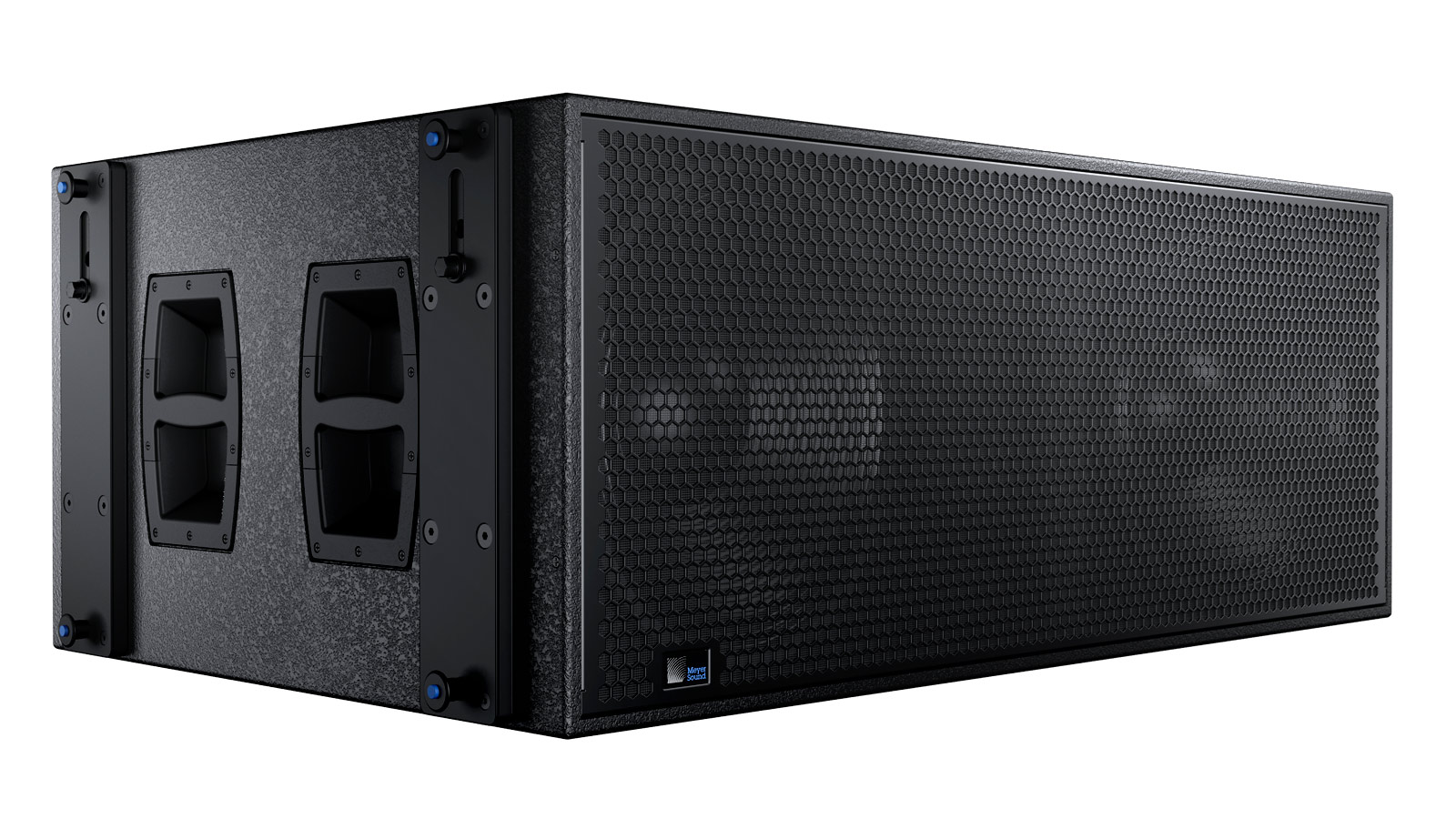
This is a bigger stack of LFCs than was used at the O2, for at the show I saw, they used a flown ‘Step Array’, to shape the output in 3D, such that it was biased downwards directly underneath the stacks.
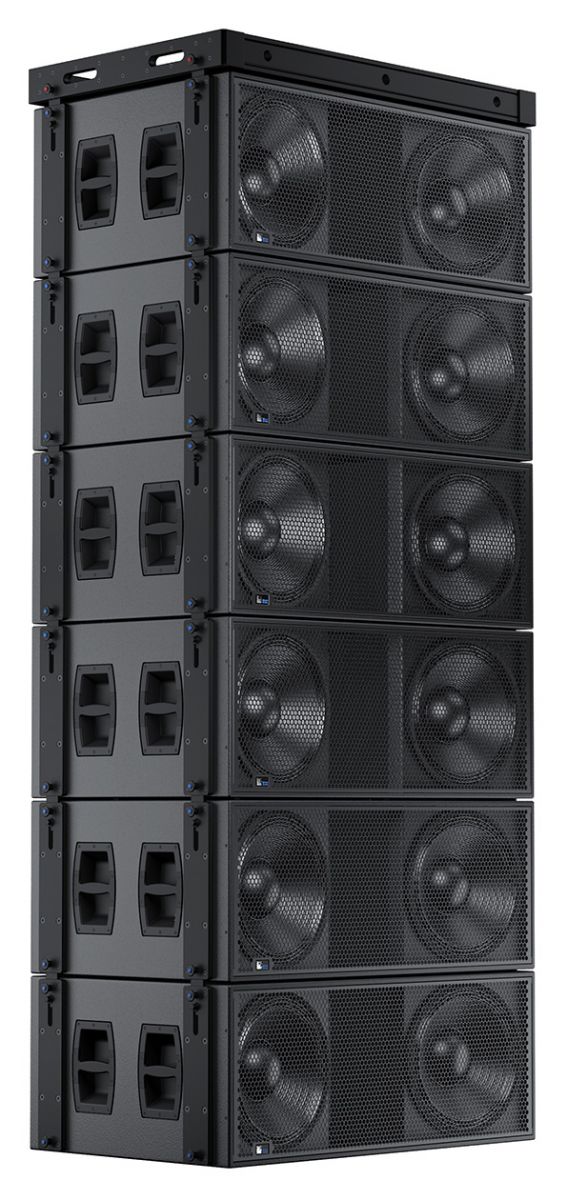
VLFC : VERY LOW FREQUENCY CONTROL ELEMENT
Childish but true, this may be my favourite product of Meyer sound. I have known about and even theorised in print about what I call the fear register frequencies. This is bass largely below hearing. It is more about feeling. Big pachyderms and massive cetaceans actually use these frequencies to communicate vast distances because bass travels. I suggest that we are all descended from the cavemen who ran out of the cave during an earthquake. The cool laid-back unfrightened cavemen, died.
Moviemakers have known about this and used deep sub bass to frighten the audience for ever. Meyer sound did some proper scientific research into the effects of quasi infrasonic frequencies upon the human psyche. And they too qualified then amazingly, quantified this.
The result just fits in with the Leo family The box is the same proportions as a normal 1100-LFC subwoofer. However, as the worlds most famous bass head, Mr. Neil Case always says, us car guys are all bass mechanics. We are alone of all audio consumers discuss sixth order and transmission line. The merits of sealed versus ported and we even understand isobaric enclosures. So we can understand that the 18 inch loudspeakers in the Very Low Frequency Control element are likely to be a completely different design to those in the 1100-LFC. More bonkers magnets, with the loudspeaker having a cone travel more like a vacation than an excursion and amplification all geared to driving the system so deep into single figures in Hertz, that they can say it is flat and plays effectively down to a ridiculous 11Hz.
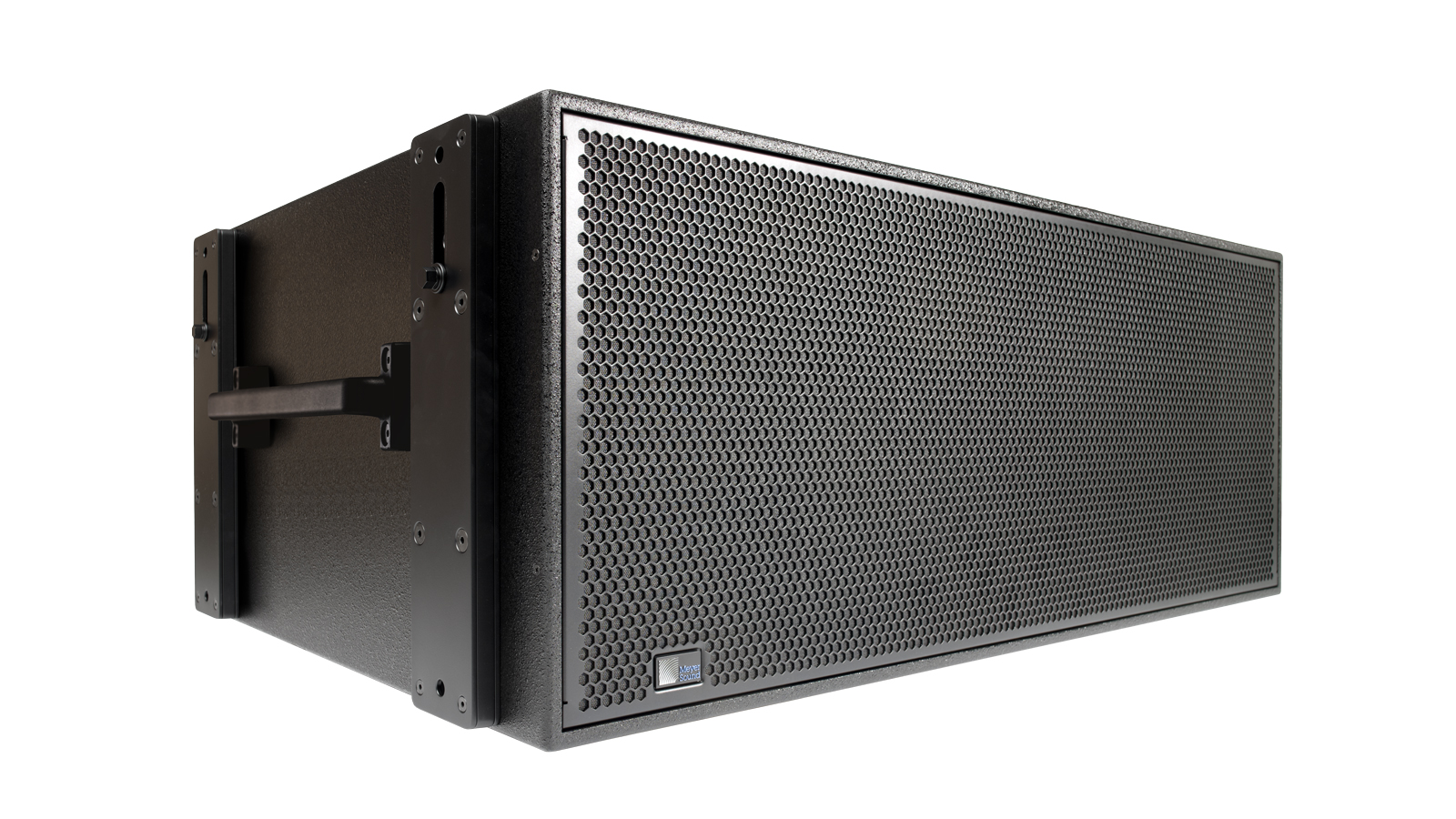
And here’s a more extreme and even scarier thing. From what I can work out about Meyer Sound, if they refer to a specification, it will be real-world. So discovering that the pass band of the mighty VLFC enclosure is quoted as 10 to 36Hz, (with the ‘ours goes down to eleven’ joke) then that has to be what other people call the F3. Or the frequency at which the bass output has reduced by 3dB. This implies an F6 and an F9. In other words, I am accusing the VLFC of being able to play a relevant volumes down to something like 6 Hz.
STAGE MONITORS AND FOLD BACK
The monitor engineer has his own mixer to feed just what each artist wants in their personal feed. “Everything louder than everything else” is the goal. Meyer supply a serious wedge and in two sizes. At the O2, these were mounted flush to the stage, rather than angled up at the artists and they had sixteen of the 210 model, in eight pairs around the perimeter, with a monster power MJF212 at each corner, each with a specific mix, or else just their instrument alone on full power.
The MJF comes as a 210 or a 212, with a horn and a brace of midbasses, either tens or twelves, work it out.
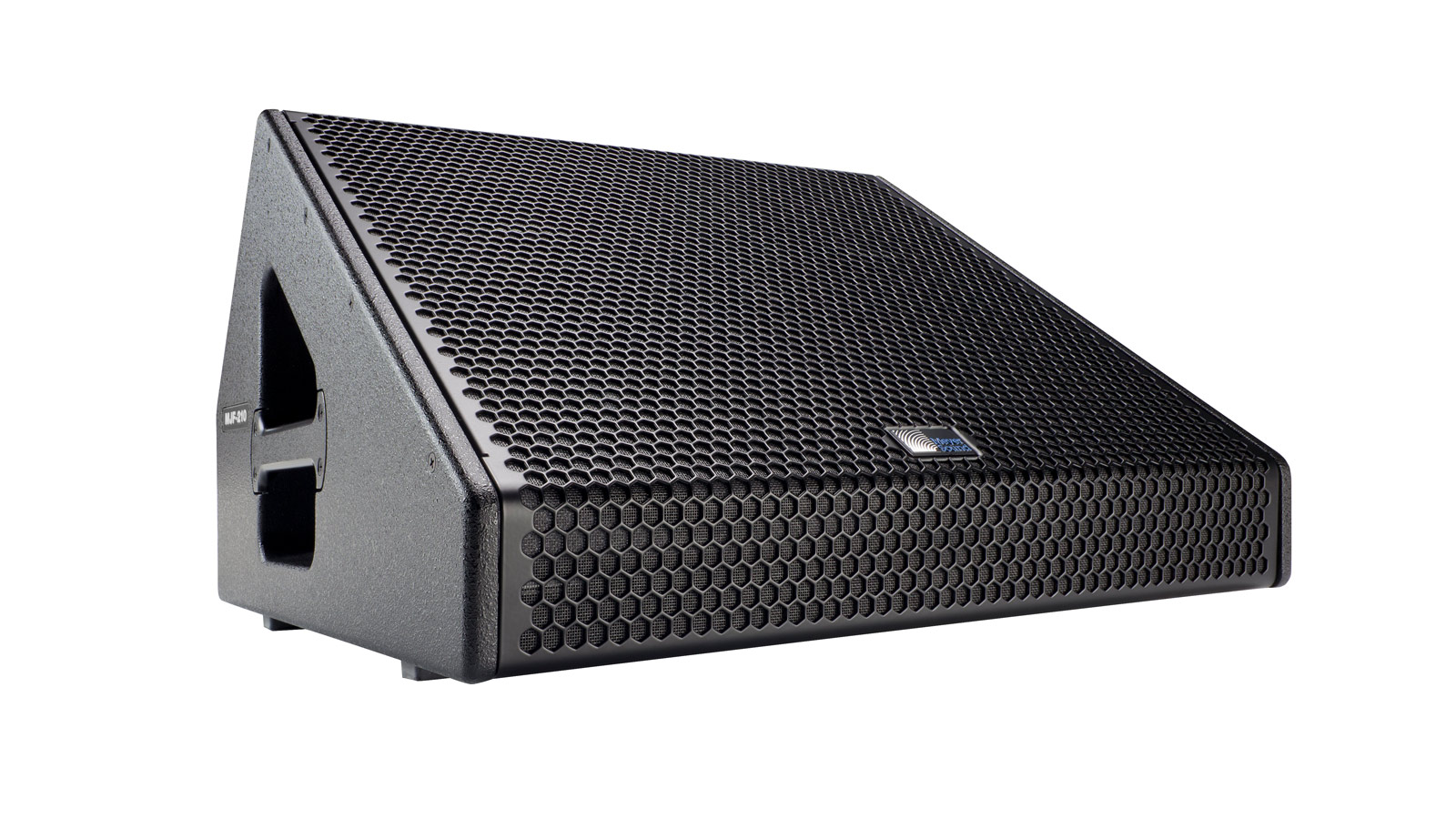
Often found in clusters…

Finally, mention has to be made of the AMIE system used for fold back at the desk. Just two boxes and a beastly subwoofer, (I think it was a 750-LFC) means wide range big audio. I was impressed how they sounded.
The drummer used just one monitoring ‘speaker’. The Aura Dynamics invention, sold as the Buttkicker. It is a lumpy engine bolted underneath the drum seat and its magnet, rather than a cone is moved by the thousand watts input. No, a big polymer spring means that the magnet bounces and shoves vibrations of immense power, right up the stickman’s damn spine.
And that is every speaker in the system, enough to fill the O2 for this outfit to play in the round.

